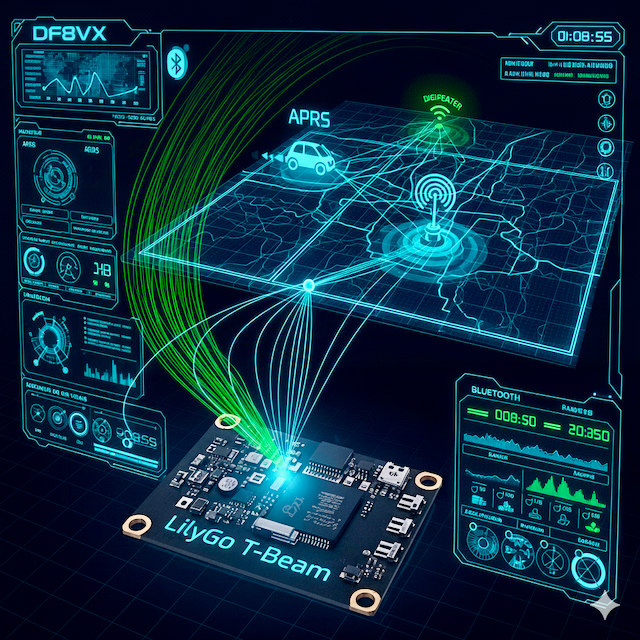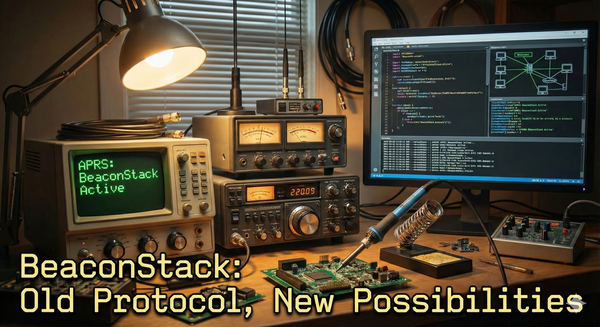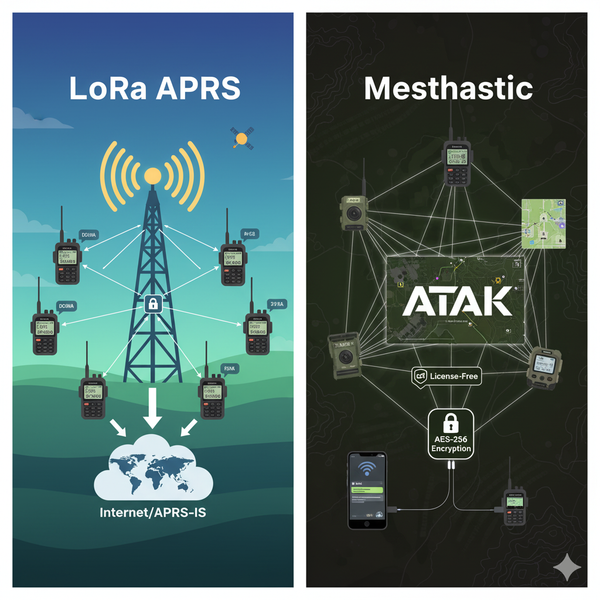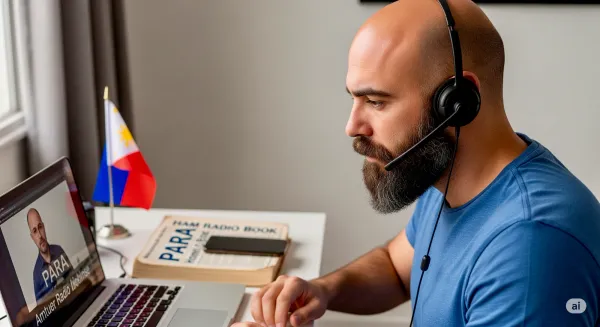My First Foray into LoRa APRS with the LilyGo T-Beam
LoRa APRS opens new horizons in amateur radio. With the LilyGo T-Beam, I built a low-power tracker bridging LoRa and VHF APRS. From flashing firmware to real-world testing, this small board impressed me—bringing IoT and ham radio together in a powerful, portable way.

Hello fellow hams and radio enthusiasts! It's DF8VX here. For a while now, I've been fascinated by the intersection of IoT (Internet of Things) technology and our classic amateur radio world. The one that's really caught my eye is LoRa APRS. It promises a low-power, long-range alternative for packet reporting, and I decided it was time to jump into the rabbit hole. 🐰 My weapon of choice? The versatile LilyGo T-Beam 433 MHz (LORA32 model).
This little board is a powerhouse for its size. It comes packed with a bright OLED display, three user buttons, a NEO-6M GPS module, and both Bluetooth and WiFi connectivity. It’s the perfect all-in-one package for a standalone tracker.
Flashing and First Fix
To get started, I powered the unit with a trusty Samsung INR18650 battery. For the brains of the operation, I opted for the popular firmware from Richong Guzman.
Flashing was straightforward using the web flasher. A quick pro-tip: I initially tried using Safari, which didn't play ball. Switching over to a Chromium-based browser worked flawlessly. Once the firmware was on, the T-Beam created its own WiFi access point. I connected my MacBook, navigated to the web UI, and configured all my settings—callsign, APRS symbol, etc. The interface is clean and has some surprisingly deep options.
After saving and rebooting, it was time to get a GPS lock. It took a few minutes for the NEO-6M to get its first fix, which is pretty standard. With my position locked, I was officially on the air!
Bridging LoRa and RF
Here's where things got really exciting. I wanted to see if I could integrate this little LoRa device with my existing VHF APRS setup. I fired up APRSdroid on my Android phone and paired it with the T-Beam via Bluetooth. The connection was immediate and stable. ✨
Curious, I sent a test message from APRSdroid. The signal path was wild:
My Android Phone 📱 → (Bluetooth) → T-Beam 📡 → (LoRa 433 MHz) → Local iGate/Digipeater → (RF 144.800 MHz) → My Yaesu FTM-200 📻
And just like that, the message popped up on my radio's screen. It worked! I sent a message back from the FTM-200, and it appeared in APRSdroid almost instantly. The bridge was complete. As a bonus, the T-Beam can send telemetry data in its packets, including the battery voltage, which is a fantastic touch for a field-deployed unit.
For long-term operation, I turned off the OLED display. It looks great, but it's a real battery hog. With the screen off, the 18650 should last longer.
A QRP Reality Check
The stock "rubber ducky" antenna that comes with the T-Beam works surprisingly well for being out in the open in the city. However, the real test is mobile operation. I placed the unit inside my car, right next to the window, and performance dropped significantly. The car acts as a Faraday cage, which is no surprise.
My first attempt to solve this was a Diamond magnet mount 144/433 MHz antenna. I figured a proper external antenna would be a huge upgrade. It actually got worse. My theory is that the low power output of the T-Beam (it's a QRP device, after all) just couldn't overcome the signal loss from the fixed length of coax cable. Any impedance mismatch or loss in the cable is magnified when you're only dealing with milliwatts.
My next plan is to minimize that loss. I've ordered a BNC 144/433 MHz antenna that I plan to connect with a very short SMA-to-BNC pigtail. The goal is to get the radiating element as close to the device's output as possible. I'm hopeful this will give me the results I'm looking for.
Final Verdict
Even with the antenna hurdles, I am incredibly impressed. The LilyGo T-Beam, running this firmware, is a perfect choice for a standalone tracker. It's small, self-contained, and highly configurable.
I can easily see myself strapping this to my backpack for a hike, mounting it on my motorbike, or tossing it in the van for a road trip. The BNC antenna might be a bit long for a bicycle, but for everything else, this is going to be my new go-to APRS tracker.
If you've been on the fence about trying LoRa APRS, I highly recommend it. It's an affordable and fun way to experiment with digital modes.



